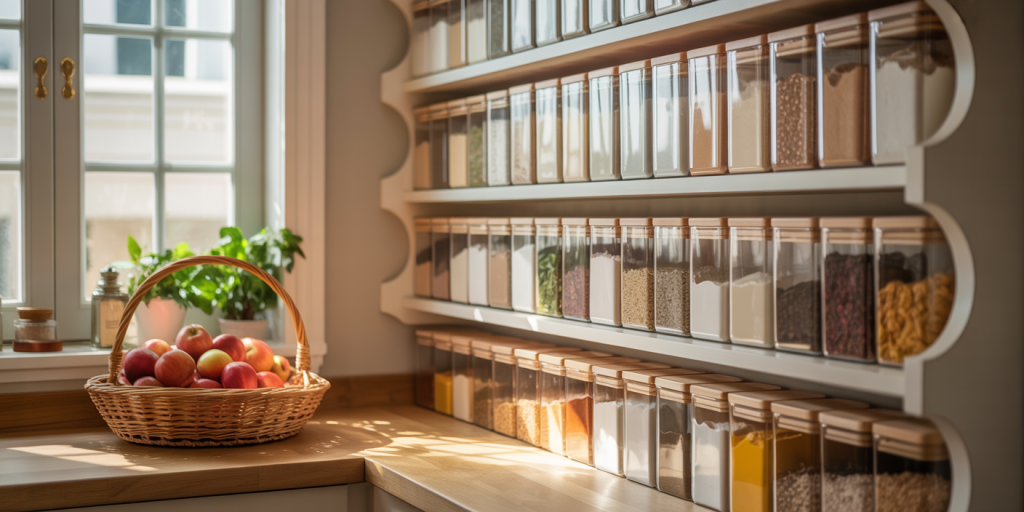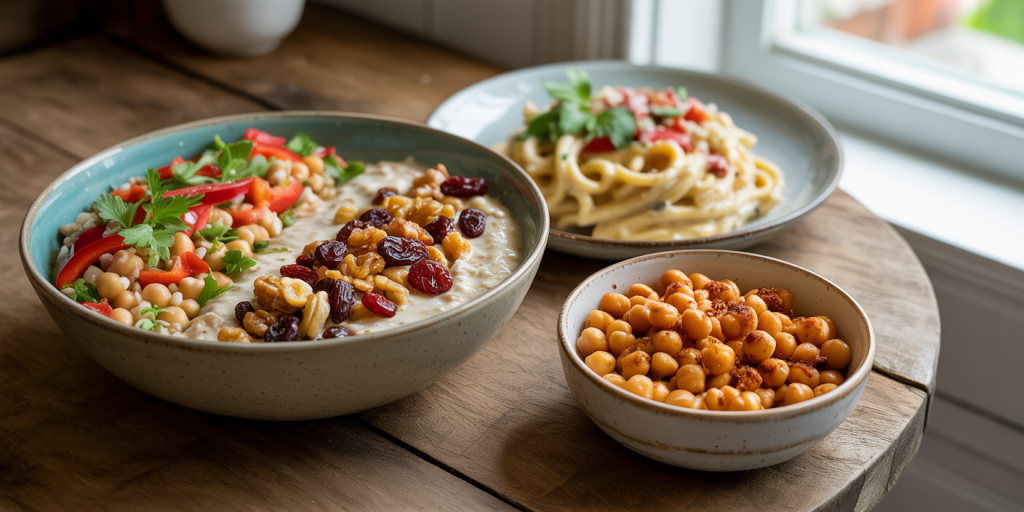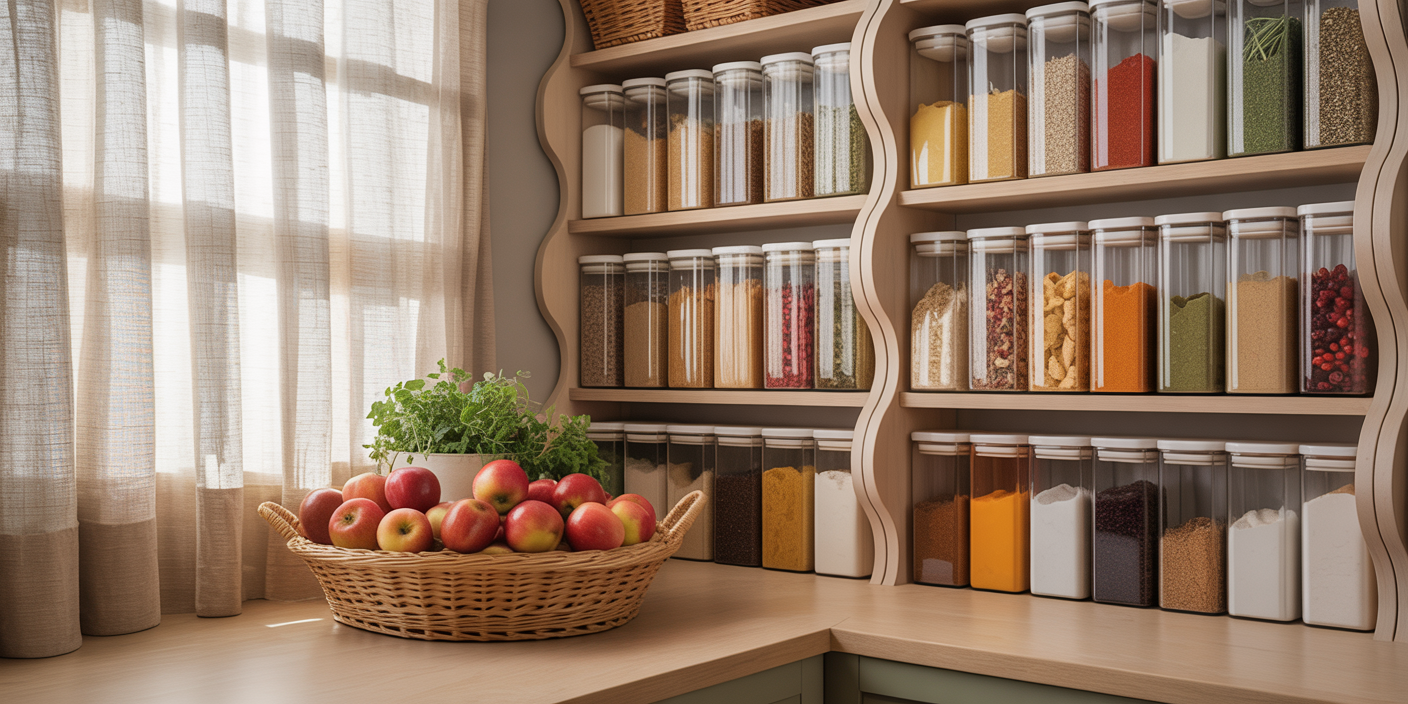Cooking with pantry staples is an invaluable skill that brings convenience, nutrition, and creativity to everyday meals. Whether you live in a small apartment with limited grocery access or want to save money and reduce food waste, knowing how to make tasty dishes from common pantry ingredients can transform your cooking experience. According to a survey by the Food Marketing Institute, about 44% of consumers try to use what they already have before heading to the store, highlighting the universal need for mastering pantry cooking. This guide will help you understand how to effectively utilize staple ingredients and turn them into hearty, satisfying meals.
Understanding Pantry Staples: What They Are and Why They Matter
Pantry staples are the foundational ingredients that most households keep on hand due to their versatility and long shelf life. Common examples include dried beans, rice, canned tomatoes, pasta, flour, sugar, and spices. These items form the backbone of many recipes across various cuisines because they provide essential nutrients and can be stored for extended periods.

From a nutritional perspective, many pantry staples offer significant health benefits. For example, dried beans and lentils are rich in protein and fiber, while whole-grain rice presents complex carbohydrates and B vitamins. Having these staples readily available means you can prepare wholesome meals even on days when fresh ingredients aren’t accessible. Additionally, by cooking with pantry items, you can significantly reduce food waste and operating costs, as these items often cost less than fresh produce and meats.
Building a Pantry-Friendly Kitchen
Creating a pantry-friendly kitchen starts with stocking the right ingredients. The ideal pantry should include a variety of grains (such as rice, quinoa, or barley), legumes (like chickpeas and black beans), canned goods (including tomatoes and coconut milk), baking essentials (flour, baking powder), oils, and an array of dried herbs and spices. These basics provide a flexible foundation on which countless recipes can be built.
For example, a well-stocked spice rack can elevate simple dishes using plain staples. A pinch of smoked paprika, cumin, or dried oregano can transform a bowl of lentil soup from bland to flavorful. Organizing your pantry physically can also improve cooking efficiency. Transparent containers or labeled jars help keep track of what you have, decreasing the chance of overbuying or letting items expire. According to research from the Natural Resources Defense Council, up to 40% of food in the U.S. goes to waste annually, much of it due to poor storage or neglect. Properly maintaining your pantry reduces waste and saves money.
Practical Cooking Techniques for Pantry Staple Recipes
Once your pantry is stocked, learning the best cooking methods enhances your culinary results. Many pantry staples like rice and beans require soaking or rinsing to improve texture and reduce cooking time. For instance, soaking dried beans overnight can reduce cooking time by up to 50%, allowing for faster weeknight meals.
Using different cooking techniques such as roasting, simmering, or sautéing can bring out complex flavors from basic ingredients. A practical example is making a tomato sauce from canned tomatoes—simmering them with garlic, onion, and a touch of sugar for 20-30 minutes mellows acidity and intensifies taste. Similarly, toasts nuts or spices before adding them can unlock aromatic oils that enrich a dish.

Another useful tip is batch cooking. Preparing a large pot of beans or rice can serve as a base for multiple meals throughout the week—think bean salads, rice bowls, or stews. This method not only saves time but creates a variety of meals with minimal effort.
| Staple Ingredient | Preparation Tips | Common Cooking Methods | Time Required |
|---|---|---|---|
| Dried Beans | Soak overnight, rinse | Boiling, pressure cooking | 1-3 hours (soaking + cooking) |
| Rice (white) | Rinsing before cooking | Boiling, steaming | 15-20 minutes |
| Canned Tomatoes | Drain for less liquid | Simmering, roasting | 20-30 minutes |
| Pasta | Salt water boiling | Boiling | 8-12 minutes |
| Flour | Sift before use | Baking, thickening sauces | Varies |
| Lentils | Rinse, no need to soak | Boiling, simmering | 20-40 minutes |
Creative Pantry Staple Recipes for Every Meal
The versatility of pantry staples can be showcased by creating meals for breakfast, lunch, dinner, and even snacks. Start your day with a simple yet nutritious oatmeal made with rolled oats, cinnamon, and dried fruits. According to USDA data, oats offer 16.9 grams of protein per 100 grams and are an excellent source of fiber, promoting heart health and digestion.

For lunch, a chickpea and rice salad with olive oil, lemon juice, and herbs can provide a fresh, satisfying meal using only pantry ingredients. Mixing canned chickpeas with cooked rice, diced canned tomatoes, and a few seasonings requires no fresh produce and translates to a well-balanced dish.
Dinner ideas include lentil curry made from dried lentils, coconut milk (canned), and curry spices, a global favorite that brings warmth and complex flavor from basic staples. Another simple option is pasta carbonara; by keeping pasta, eggs, cheese (hard cheeses store well in the fridge), and black pepper on hand, you can whip up a classic Italian dinner in under 20 minutes.
For snacks, roasted spiced chickpeas or homemade grain crackers can be prepared with minimal ingredients and stored for several days, making them convenient yet healthy alternatives to processed snacks.
Comparing Pantry Staples for Nutritional Value and Shelf Life
Choosing which staples to stock can depend on both nutritional value and shelf-life considerations. The following table offers a side-by-side look at common pantry staples, their caloric content, protein, fiber, and approximate shelf life under optimal storage.
| Pantry Staple | Calories (per 100g) | Protein (g) | Fiber (g) | Approximate Shelf Life (Months) |
|---|---|---|---|---|
| Dried Lentils | 116 | 9 | 8 | 12-24 |
| Brown Rice | 111 | 2.6 | 1.8 | 6-12 |
| Canned Chickpeas | 164 | 9 | 7.6 | 24-36 (unopened) |
| Rolled Oats | 379 | 13 | 10 | 12 |
| All-Purpose Flour | 364 | 10 | 3.4 | 6-8 |
| Canned Tomatoes | 18 | 0.9 | 1.2 | 24-36 (unopened) |
From this comparison, it is evident that legumes like lentils and chickpeas provide a high protein and fiber content, making them excellent staples for a nutritious diet. Whole grains such as brown rice have slightly fewer nutrients than legumes but still contribute valuable energy and essential vitamins. Meanwhile, canned goods’ long shelf life offers an advantage in emergency preparedness or low-freshness scenarios.
Future Perspectives: Evolving Trends in Pantry Cooking
With increasing awareness about sustainability, health, and convenience, pantry cooking is poised to grow in popularity. The COVID-19 pandemic accelerated interest in stocking long-lasting food and learning to cook from staples, with a reported 30% increase in pantry sales in some regions during 2020, according to Nielsen analytics.
Technological advancements also support this trend. Smart kitchen apps now offer personalized pantry management, recipe suggestions based on available ingredients, and expiration notifications, helping reduce waste and encourage cooking from staples. Additionally, more plant-based and gluten-free pantry options are becoming mainstream, accommodating dietary preferences and expanding pantry possibilities.
Looking ahead, the focus on reducing food waste and promoting nutrition through universally accessible ingredients will spur innovation in pantry staples. New food preservation techniques and sustainable packaging might further extend shelflife and nutrient retention. Meanwhile, culinary education emphasizing pantry versatility will empower more home cooks to be creative and independent.
By mastering how to cook with pantry staples today, you align with a future of sustainable, nutritious, and cost-effective eating that benefits both individuals and the planet.

Deixe um comentário